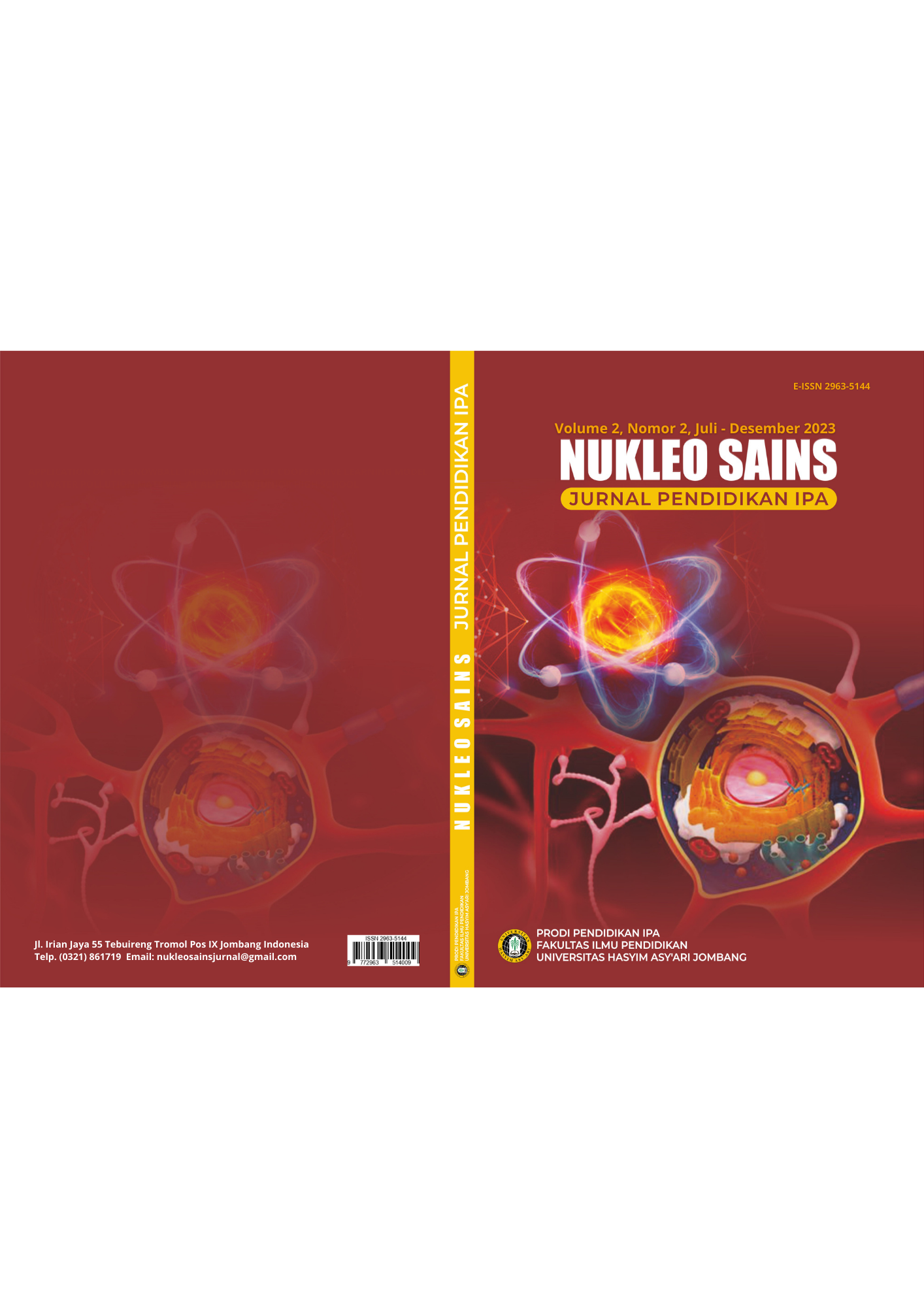THE EFFECT OF TGT-PUZZLE COOPERATIVE LEARNING TO IMPROVE LEARNING ACHIEVEMENT ON MOLECULAR GEOMETRIC MATERIAL
DOI:
https://doi.org/10.33752/ns.v2i2.5320Keywords:
TGT-Puzzle cooperative; learning achievement; molecular geometricAbstract
Chemistry can be divided into two concepts: concrete concepts and defined concepts. The geometris of a molecule is one of the defining concepts, because ideas are at the molecular level and are invisible to the naked eye. Therefore, this study was conducted to determine the effect of the TGT Puzzle cooperative learning strategy on the success of learning the material of molecular form. The purpose of this study was to determine whether learning achievement increased after learning the TGT Puzzle cooperative learning strategy in class X IPA MA Hidayatul Ummah Pringgoboyo. This study uses statistical inference technique using paired sample t-test to determine whether learning performance increases after learning with the TGT Puzzle cooperative learning strategy. The method of analysis used paired sample t-test with a significant difference (sig) <0.05. The results of this study indicate an increase in learning achievement after learning with the TGT Puzzle cooperative learning strategy.
Downloads
References
Bolhassan, N. & Taha, H., 2017. TGT for Chemistry Learning to Enhance Students’ Achievement and Critical Thinking Skills. Department of Chemistry, Faculty of Science and Matehematics. AIP Conference Proceeding. 18(47), pp. 1-7.
Cardellini, L., 2012. Chemistry: Why the Subject Is Difficult? Educacion Quimica. 23(2), pp. 305-310.
Diniwati, A., 2011. Hubungan Antara Kemampuan Berpikir Formal Dengan Kemampuan Memberikan Gambaran Mikroskopis Konsep Asam Basa pada Siswa Kelas XI SMA Negeri 1 Gorontalo. Skripsi. Jurusan Pendidikan Kimia, FMIPA Universitas Negeri Gorontalo.
Harle, M. & Towns, M., 2010. A Review of Spatial Ability Literature, Its Connection to Chemsistry, and Implications for Instruction. American Chemical Society and Division of Chemical Education. 20(20), pp. A-J.
Mochtar, R., Arsyad, M. & Aziz, A., 2014. Upaya Meningkatkan Hasil Belajar Fisika dengan Menggunakan Media Puzzle pada Peserta Didik Kelas X SMA YASPIB Bontolempangan Gowa Tahun Pelajaran 2013-2014. JPF, 2(2), pp. 165-174.
Mustofa. P., Masrid, & Suleman, N., 2011. Hubungan Antara Kemampuan Berpikir Formal dan Kcerdasan Visual-Spasial dengan Kemampuan Menggambarkan Bentuk Molekul Siswa Kelas XI MAN Gorontalo Tahun Ajaran 2010/2011. Jurnal Entropi. 8(1), pp. 551-561.
Nopiyanita, T., Haryono, & Ashadi., 2013. Penerapan Model Pembelajaran Kooperatif Tipe Teams Games Tournament (TGT) untuk Meningkatkan Prestasi Belajar Kimia dan Kreativitas Siswa pada Materi Reaksi Redoks Kelas X Semester Genap SMA Negeri 3 Sukoharjo Tahun Pelajaran 2012/2013. Jurnal Pendidikan Kimia (JPK). 2(4), pp. 135-141.
Pertiwi, Y. H., & Masykuri, M., 2017. Penerapan TGT-Chempuzzle pada Pembelajaran Hidrokarbon untuk Meningkatkan Prestasi Belajar Kimia Peserta Didik. Jurnal Inovasi Pendidikan IPA, 3(1), pp. 111-117.
Raguwan, S. T. G., & Sabang, S. M., 2014. Pengaruh Model Pembelajaran Kooperatif Tipe Snowball Throwing Terhadap Hasil Belajar Siswa Pada Materi Bentuk Molekul Kelas XI IPA SMA Negeri 1 Pasangkayu. Jurnal Akademika Kimia. 3(1), pp. 1-7.
Sunyono, S., Wirya, I. W., & Sujadi, G., 2009. Identifikasi Masalah Kesulitan dalam Pembelajaran Kimia SMA Kelas X di Propinsi Lampung. Jurnal Pendidikan MIPA, 10(2), pp. 9-18.
Woldeamanuel, M. M., Atagana, H., & Engida, T., 2014. What Makes Chemistry Difficult? AJCE. 4(2), pp. 31-43.
Downloads
Published
Issue
Section
License
Copyright (c) 2023 Kriesna Kharisma Purwanto

This work is licensed under a Creative Commons Attribution 4.0 International License.












